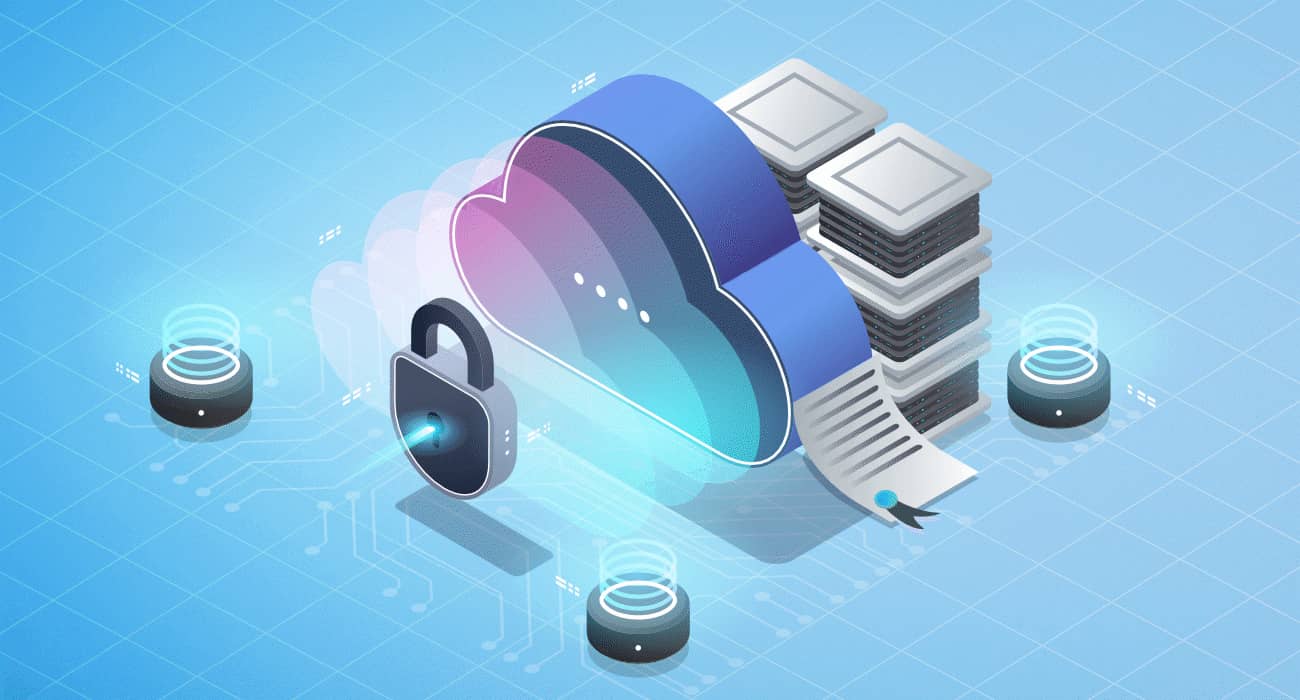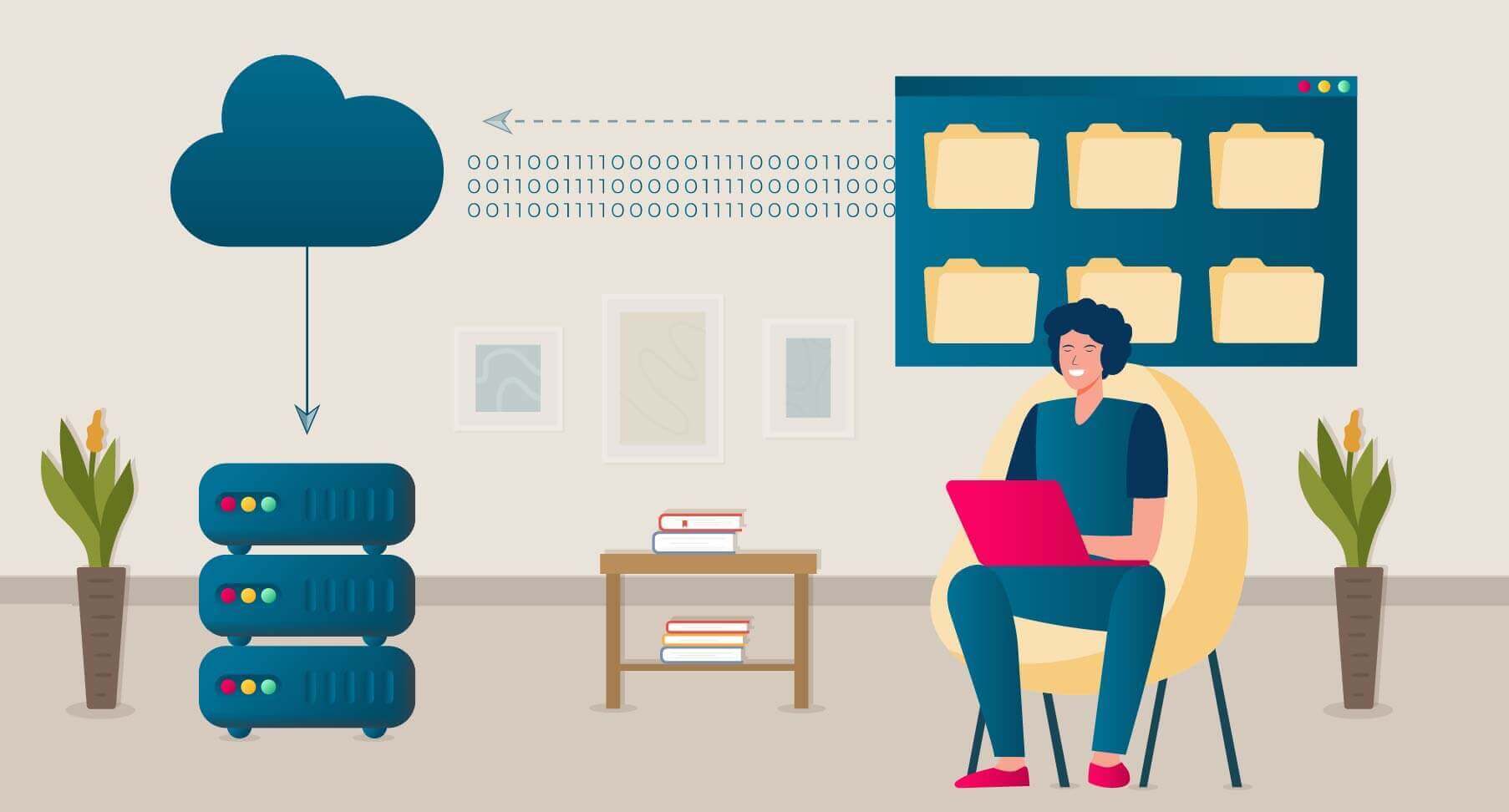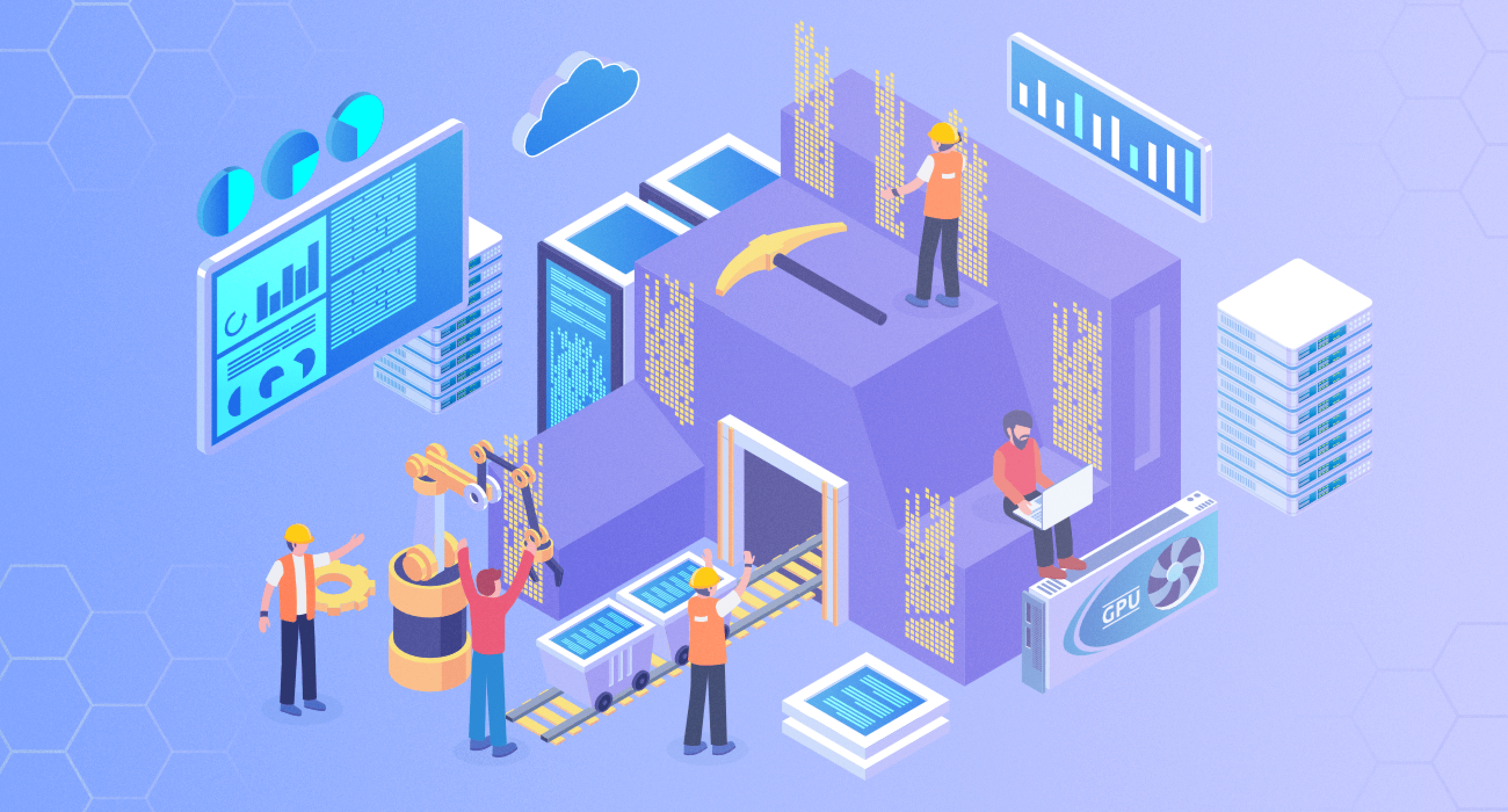If you want to build an e-commerce ecosystem that performs well both now and in the future, you need the right e-commerce tools and tech stack. An e-commerce tech stack consists of all the different software, frameworks, and programming languages used to develop an e-commerce solution.
All these tools work together to create a fully functioning system and each has a direct impact on how your e-commerce applications perform. Choosing the right tech stack is even more important in e-commerce as the slightest performance issues can seriously impact sales and conversions.
In this post, we will outline the tools that go into an e-commerce tech stack. We will also provide examples of tech stacks from some of the world’s leading retailers for you to use for inspiration. But first, let’s explore how modern software architecture principles are influencing the evolution of e-commerce tech stacks.
Tips for Building an E-Commerce Tech Stack
Separate the front and back end
The tools and technologies in a modern e-commerce tech stack are traditionally split between the front and back ends.
The frontend, or client side, is the presentation layer that users can see and interact with and help increase repeated customer rates. The backend consists of server side technologies and works behind the scenes to perform the complex set of processes needed to provide users with information and functionality related to online shopping experiences. It is built of three main parts; a server, an application, and a database, each of which relies on a variety of tools and frameworks to function.
Traditionally, retailers used a monolithic architecture, where the front and backend systems were tightly coupled into a single solution. There was a single code base, meaning all components were dependent on each other. With this setup, every component needs to function or the entire system will fail to work.
While these solutions provide a single platform to manage the entire shopping experience, they lack the flexibility necessary to keep up with the rapid changes in technology and the growing complexities of e-commerce. Because of this, retailers have placed a greater importance on agility and scalability, leading to changes in the modern e-commerce tech stack.
Businesses have now adopted new software architectures such as headless commerce and microservices in order to have a robust backend system while still being able to create quality customer experiences across a variety of sales channels.
Use headless commerce and microservices
Headless commerce decouples the frontend presentation layer from the backend functionality. Microservices take this a step further by separating the single backend platform into a distributed system of applications.
Instead of using a single, backend platform that contains all every e-commerce feature (many of which are never used), microservices provide a modular way to design a software solution as each application is built with an independent set of components which then run each application process as a service.
The services communicate via APIs and each serves a single function such as a shopping cart or product search. Because each component of an application is developed and operates independently, you can change one service of the application without affecting the others. This enables you to follow a best in breed approach as you can quickly substitute the latest technologies into your stack.
With microservices, each component can use different data storages or be written in different programming languages. This gives developers more flexibility as they are not bound to a single toolset.
Tools for Your E-Commerce Tech Stack
Today there are an abundance of tools that development teams can pick and choose from when forming the ideal tech stack. Let’s examine the main areas of a modern e-commerce tech stack including some of the more popular tools for each.
Table of Contents
1. Frontend Languages
There are three languages used to power the frontend of most e-commerce websites.
- HTML (Hypertext Markup Language): provides the structure of the information presented in the browser
- CSS (Cascading Style Sheets): a style sheet language that describes how HTML documents will appear on the user’s device.
- JavaScript: a programming language that is used to provide interactivity to pages in web browsers.
These frontend technologies are also essential when developing custom Shopify themes, helping businesses create highly responsive and visually appealing online stores. There are other, complementary tools such as the CSS extension language called Sass which has a variety of frameworks including Compass, Bourbon, and Susy.
2. JavaScript Frameworks
JavaScript frameworks are code libraries that can be used as a predefined structure for building an application. There are several different frameworks that are useful in an e-commerce tech stack.
- Angular: an open source framework based on the model-view-controller (MVC) architecture. It helps to expand the HTML vocabulary by adding directives used to build dynamic apps.
- React: an open-source JavaScript library used for building user interfaces. It can also be used to create reusable UI components. This is what we use at Fabric. It enables customers to easily add components to our headless CMS e-commerce that businesses users can leverage.
- Vue: an open-source JavaScript framework used for building web interfaces and single page applications. The core library focuses solely on the view layer and is easy to integrate with other libraries.
3. Programming Languages
All the processes in the backend are designed using different programming languages. These languages use different syntax to provide computers a set of instructions to execute. It is through these sets of instructions that applications get their functionality.
Here are the some of the most popular programming languages for e-commerce:
- Python: an object-oriented programming language that can be used on a server to create web applications.
- Ruby: a dynamic, object-oriented programming language offering efficiency and flexibility to e-commerce developers.
- C#: a modern, object-oriented programming language that is primarily used on the Windows .NET framework but can also be added to an open source platform.
- Java: a general purpose programming language that is commonly used for apps, servers, and database connections.
- PHP: an open-source scripting language that can be embedded into HTML. It is integrated with common databases like MySQL and PostgreSQL and can be used to create entire e-commerce sites.
4. Operating Systems
Operating systems are critical for applications as they provide access to the computing power and resources needed to function.
The most popular operating systems for e-commerce tech stacks include:
- Linux: an open-source operating system that is commonly used for servers, Kubernetes, and Docker containers.
- Windows: an operating system from Microsoft, widespread among both consumer and commercial technologies. It is a popular choice for retailers as it ensures a seamless integration with other Microsoft components such as MySQL.
5. Servers
The web server is responsible for processing requests from users and delivering them the requested information. When a user wants to load a page from your storefront, their browser sends a request to the server which then gives a response with the requested files. Web servers must be able to process files written in different programming languages to fit into a modern tech stack..
Some popular server technologies include:
- Apache: an open source software that runs on a physical server. It is a popular choice for web server software due to its flexibility and ease of use.
- Nginx: an open source HTTP server and reverse proxy. Unlike other servers, it uses an event-driven architecture instead of threads to handle requests.
6. Databases
Databases use database management (DBMS) software to store, retrieve, and manage the data that is used through your applications. There are two primary types of database systems in e-commerce: relational databases that store data in tables, and non-relational databases that do not use a tabular schema.
Here are a few popular database technologies used in e-commerce:
- MySQL: a relationship database management system built on structured query language (SQL). It is the most popular open-source database and works well for e-commerce due to its scalability.
- MongoDB: a NoSQL database featuring a JSON document datastore. It stores data in documents instead of rows and columns.
- PostgreSQL: an open-source relational database management system designed to extend the SQL language and provide additional features to developers.
7. Data Storage
Data storage systems are used to store digital assets such as images or documents. Today, many retailers use data storage in the cloud as it is scalable and cost-efficient.
Here are the most popular data storage solutions:
- Amazon S3: a cloud storage system used to store and retrieve data from anywhere on the web. Instead of traditional file storage it uses object storage to store data as an independent object.
- Firebase Storage: an object storage system from Google. Data is stored in the cloud and can be accessed through reference calls.
8. Web Development Framework
Frameworks speed up development by providing reusable methodologies and libraries of code that can be used to build your applications.
Some popular frameworks used in e-commerce include:
- Laravel: an open-source framework for PHP designed for developing applications following the MVC architecture. Laravel provides a clean coding structure which can lead to faster development.
- Django: an open-source framework for Python designed to enable quick and efficient development of complex web applications.
9. Runtime Environment
Each programming language is made of two elements: syntax and an execution model. The syntax determines how the code should be written and the execution model defines the behavior of the elements of the language. Runtime environments implement portions of the execution model, creating an environment for programs to run.
A great runtime environment for e-commerce is:
- Node.JS: a JavaScript runtime environment that is popular in e-commerce as it is scalable and compatible across platforms. With APIs you can connect Node.js to browsers and databases that support JSON to create a unified tech stack.
Bringing the Technology Together
For a tech stack to be viable, all the components must be able to work together. APIs serve as the glue of a tech stack by connecting all the different components and allowing them to communicate.
APIs are able to provide data sharing and connectivity to applications even if they use different data structures or technology platforms.
In a decoupled system, API connectivity is vital to ensuring data orchestration is accurate across components. For such a setup, API gateways act as a single point for requests which are then routed to the appropriate back end service.
APIs open the door for businesses to create a tech stack that meets their exact needs. You can integrate the best available solutions and seamlessly connect them to other services without being restricted to a single technology.
Examples of Modern E-Commerce Tech Stacks
While there are endless possible combinations for building an e-commerce tech stack, there are several ready-made stacks that can be used for e-commerce. Some of the more popular options include:
- LAMP stack: the acronym stands for Linux, Apache, MySQL, PHP. These are the core components of the backend stack. The front end stack does not require a particular technology, so you are able to choose whichever works best. LAMP is good for developing applications quickly but it is not very scalable.
- MEAN stack: an acronym for MongoDB, Express, Angular, and Node.js. This stack is a common choice for developing e-commerce stores. With the Node.JS runtime environment, it is easy for developers to code JavaScript for both the front and backends. In fact, the main characteristic of the stack is that everything centers around one programming language.
- Python-Django: this stack uses the Python language and Django framework for back end development. Other components include Apache, and MySQL or PostgreSQL.
Some merchants don’t adhere to these molds and instead choose to customize every single part of their tech stack, including building their own microservices. In the past, this was a viable option as relying on a third-party service meant compromising on flexibility and customization.
However, third-party e-commerce solutions have evolved to such a degree that many are able to offer large scale enterprises the same level of quality and flexibility afforded by custom development.
This has helped shift the approach many retailers are taking when forming their e-commerce tech stack. Building a solution in-house takes a considerable amount of planning, time, and resources, along with significant upkeep.
Instead of this, what you'll find today is many retailers choosing to deploy some if not all their technology stack in the cloud using a SaaS provider. This drastically reduces the time to implementation and eliminates the burden of maintaining a solution in-house. SaaS providers also offer a more scalable solution as their infrastructure is built to handle large capacity and you are not bound by internal resources.
You’ll see this reflected in the tech stacks of some of the largest online sellers as many rely on third-party solutions for essential functionality.
We’ve compiled lists of technology stacks from several global leaders in e-commerce. You’ll see how the technologies are used together and might even find an interesting combination you had not previously considered.
Rent the Runway
Rent The Runway uses a variety of programming languages including Java, Python, JavaScript, and Ruby. According to VP of Engineering Hampton Catlin, Java is used as the main backend language while Ruby serves as “glue” in the majority of production systems.
Instead of relying solely on CSS for styling, the company uses SASS, an extension that enables the use of extra features like variables, nested rules, and inline imports.
InstaCart
Instacart has created a robust tech stack to power its grocery delivery service. The company relies on several AWS solutions including S3, EC2, and RDS for PostgreSQL.
They use Firebase for real-time data to be able to provide customers with live order updates right on their devices. Programming consists of a few languages including Ruby, Python, and Objective C for their IOS app.
Soylent
Soylent uses a slightly modified version of the traditional Python-Django stack, with Nginx instead of Apache for the server.
Like many e-commerce companies, Soylent uses JavaScript to add interactivity to its frontend displays and relies on Amazon S3 for data storage.
Conclusion
The rise in e-commerce technologies has made it easier than ever to customize your tech stack. Not all technologies will work together so it’s important to consider all the components you want to include before building your stack. For example, you may want to use a certain programming language but is that language compatible with the database you want to use?
Besides technical compatibility, there are several other factors to consider when creating a modern e-commerce tech stack. To start, look over your software architecture as it will determine what technologies you can use and how easy it is to make updates or add new features.
A monolithic architecture limits the amount of flexibility you will have with your tech stack. Continuous deployment of new features is difficult as all components are interconnected. When you want to change a part of the system, you will need to change the whole thing.
A microservices architecture offers tech stack flexibility as you can select a different technology for each specific function. Because the components are not coupled together, deploying new features or making changes can be done without issue.
If your organization has the necessary resources, you will also be faced with the build vs. buy decision. Building a solution in-house provides ultimate control of the technology, but is it worth it?
With today’s SaaS support models, plenty of solutions are available to build a highly functional and scalable system. What you may lose in control, you will more than gain in cost-efficiency and reduced time to implementation.
Overall, the advancements in technology and the ability to seamlessly integrate different solutions have created a great opportunity for e-commerce businesses. Take inspiration from the examples above and see if you could benefit from implementing some of the approaches into your own tech stack.















Leave a Reply